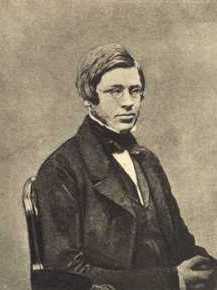Alfred Russel Wallace

Courtesty: The Alfred Russel Wallace Page. All portrait images of Wallace displayed at this site are in the public domain and may be freely reproduced provided the source is properly acknowledged.
In the early 21st century, as well as in the previous century, many biologists have argued for a more informed and celebrated acknowledgement of the contributions to our understanding of evolution by the 19th century naturalist and contemporary of Charles Darwin (b February 12, 1809; d. April 19, 1882), Alfred Russel Wallace (b. January 8, 1823; d. November 7, 1913).
Like Darwin, Wallace, 14 years Darwin's junior, an inveterate and passionate observer of the natural world of plants and animals, both at home and in the unexplored wilds of the world, and like Darwin, inspired by the economist, Thomas Malthus (1766-1834) and his ideas about the limits of population growth due to the limits of growth-supporting resources, independently of Darwin, though after Darwin had worked out the idea but before Darwin had published it, came to the conclusion that nature selected for reproductive success those individuals of an interbreeding population with heritable traits enabling them to best cope with a changing environment threatening their ability to generate progeny — natural selection, or 'survival of the fittest'.